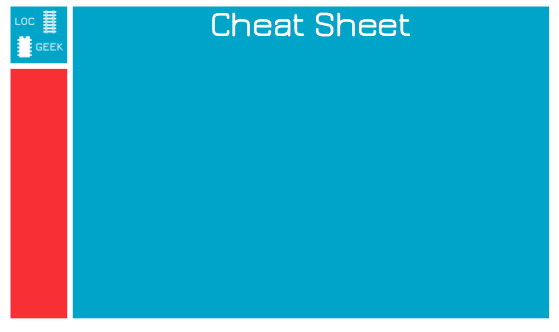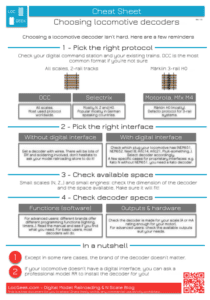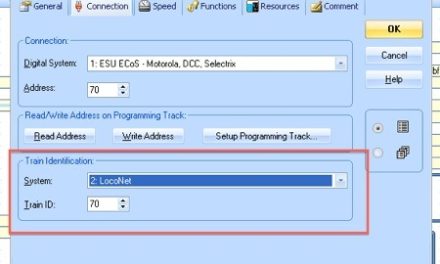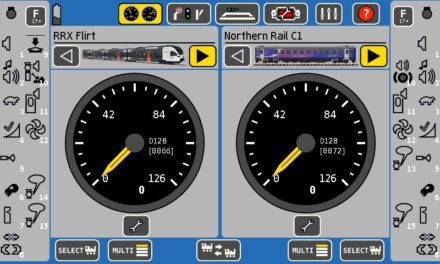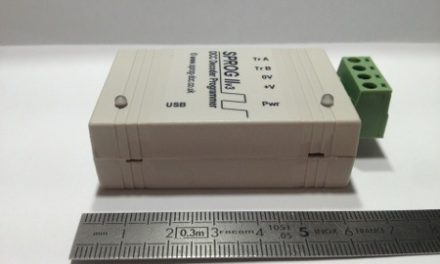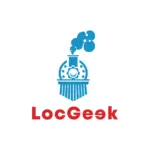One of the most common questions from digital model railroading beginners: how to choose a decoder. A quick overview.
Remarks
Many people wonder if the brand of the locomotive decoder is of importance. Short answer: in most cases, no. Digital protocols are standardized, and with few exceptions you can outfit your locomotive with decoders from many brands. This short article aims to summarize the steps to go through to choose a decoder.
Step 1: Choose a compatible protocol
The most important step: make sure the locomotive decoder speaks the same language as your command station. Make sure to refer to the cheat sheet about digital protocols here.
There are a few cases, here are the most common:
- You are running Märklin 3-rail HO trains.
Most likely, you are using a Märklin digital protocol. You will need an “Mfx” or “M4” compatible decoder (“M4” is just ESU’s name for Mfx). Most common manufacturers include Märklin itself or ESU. If you have an old layout, you may have to look for “Motorola” compatible decoder (the “old” Märklin protocol). - You are runing DCC in any scale.
Then you are in the majority. Most decoders from most brands are DCC compatible. - You are running some other format
Some people (e.g. German N-scalers) use other formats such as Selectrix 1 or 2 (SX1 or SX2) or Ratenhaus. Make sure you pick a decoder that speaks this language if for some reason you use it.
Many decoders out there understand several protocols, just make sure you check the technical specs.
Step 2: Choose the right digital interface
The second most important part: make sure the decoder will plug into your engine! 2 main scenarios
- Your locomotive doesn’t have a digital interface
It is not “digital ready” or only has “solder pads”. Then you will have to do some DIY! Choose a decoder with wires and get ready from some tinckering. Beware: this is not for beginners, don’t hesitate to send your locomotive to a store who will likely digitize it for a reasonable price. - Your locomotive has a digital interface
Make sure you check which one (NEM651, NEM652, Next18, mTc14, mTc21, PluX-something…). This is usually written on the box. To clarify some of the plugs, refer to this article about interfaces in N scale. A specific case for Kato trains: many trains have a Kato specific interface, in this case forget the rest of this article. You will need Kato decoders, unless you are an advanced user and want to solder a European decoder instead of using the interface.
Step 3: Check available space
Yep, interfaces are more or less standardized, but the space available for the decoder really isn’t always respected. If you are in N or Z scale especially, it is essential you have a look at the dimensions of the decoder you have picked. Make sure it will fit (height, width, length). Some brands are known to manufacture very small decoders, or have models that are particularly small (sometimes with limited functionality).
Step 4: Check decoder specs
If you are on a big scale (HO and above), always check that the decoder is designed for your scale. This usually means the decoder power rating ( in Amperes, A, or milliameperes, mA) is enough for the motor size of your engine. A too weak decoder may be damaged or die if you try to use it for a too big train!
In terms of functionalities: if you are a beginner, most decoders will suit your needs. If you are an advanced user, you may wanna look at some aspects of the decoder:
- Programming options (lights, timers, auto-decoupling…).
These are purely “software” characteristics of the decoder and vary a lot from brand to brand - Physical outputs.
If you are not using a digital interface (or plan to add other lights as an advanced user), make sure the decoder has all the outputs that you need. You might also be looking for a SUSI interface (to add a sound module) or other specific outputs.
Final thoughts
The “brand” is often irrelevant in the choice of a decoder. As long as you observe the above steps, any compatible decoder should do. Beware that programming a decoder requires some skills, and functions differ a lot from brand to brand. Many people (including myself), prefer to limit themselves to one or few brands. You end up “knowing” the decoders better for future trains.
Also a note for our North-American friends: in many US or Canadian models, digitizing a locomotive doesn’t actually involve installing a decoder but sometimes buying a replacement “electronic board” for the locomotive. Those boards are often specific to the very locomotive model you have. Check with the manufacturer.
Need that information at hand? Download the cheat sheet here!

